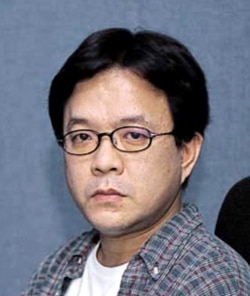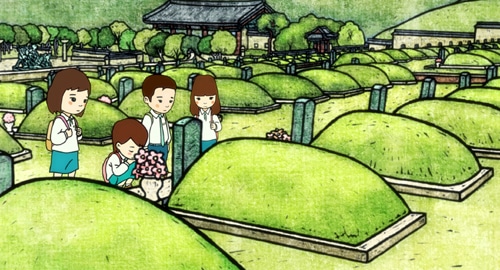Song of May 2
2007
INTERNATIONAL INVITATION
Seung-il Jeon | 2007|DV|Animation|Color|6min 40sec
SYNOPSIS
One day of spring with green trees, some of middle school students visit the National Cemetery for the May 18th Democratic Uprising for their field works. They write down the epitaph of a girl who was killed by the military during the democratic uprising in 1980, and walk around the graves of the missing where only tombstones are placed without graves since the bodies have not been found.
DIRECTING INTENTION
Although the juristic judgment has been done to the assailants for the People’s Uprising on May 18th, the scars still leave in the deep inside of people, which are still unsolved and scattered to each generation. Since so pretty and impressive were the children I met at the National Cemetery for the Uprising on May 18th when I went there to collect some materials for my film, I expressed the impression with my animation.
FESTIVAL & AWARDS
‘오월의 노래 2’는 ‘임을 위한 행진곡’, ‘오월의 노래 1’ 등과 함께
5·18 민중항쟁의 의미를 담은 대표적인 민중가요로,
미쉘 폴나레프의 샹송 ‘누가 할머니를 죽였는가 Qui a tue grand-maman’가 원곡이다.
80년 5월 광주에서 벌어진 참극을 너무나도 생생한 가사로 표현한 이 노래는 80년대 초반 등장하여
민주화운동의 여러 영역에서 널리 불리워졌는데 작사와 편곡을 누가 했는지는 아직까지 밝혀지지 않았다.
DIRECTOR

Seung-il Jeon
'Memory of May 2’ is a famous People’s song with the meaning of the Democratic Movement on May 18th along with ‘Marching for Love’ and ‘Memory of May 1’. The original song is a chanson ‘Qui a tue grand-maman’ by Michel Polnareff. Describing the tragedy of Gwangju in May, 1980, this song has been sung in various fields of democratic movements since it appeared in the early 1980s, and the lyric writer and the arranger are still unknown. In this animation, it is sung with sorrowful lyrical sentiment by a jazz vocalist Kang Eun-young from Meari, a musical community of Seoul National University
STAFF
Music Eun-young Kang
